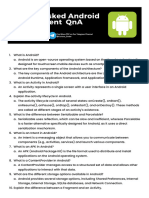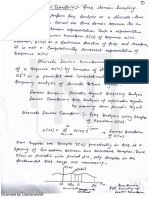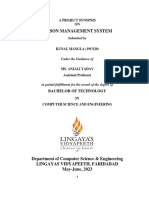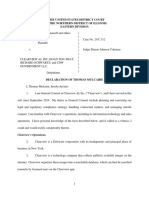0% found this document useful (0 votes)
59 views11 pagesMobile Application Development-Model Questionswithanswers
The document provides a comprehensive overview of mobile application development, focusing on Android. It includes model questions and answers covering key concepts such as fragments, Android operating system, mobile technologies, data storage methods, lifecycle methods of activities, Google Maps integration, Toast messages, user interface components, and the structure of the AndroidManifest.xml file. Additionally, it discusses various layouts, menus, adapters, and the action bar in Android Studio.
Uploaded by
adarshgowda018Copyright
© © All Rights Reserved
We take content rights seriously. If you suspect this is your content, claim it here.
Available Formats
Download as PDF, TXT or read online on Scribd
0% found this document useful (0 votes)
59 views11 pagesMobile Application Development-Model Questionswithanswers
The document provides a comprehensive overview of mobile application development, focusing on Android. It includes model questions and answers covering key concepts such as fragments, Android operating system, mobile technologies, data storage methods, lifecycle methods of activities, Google Maps integration, Toast messages, user interface components, and the structure of the AndroidManifest.xml file. Additionally, it discusses various layouts, menus, adapters, and the action bar in Android Studio.
Uploaded by
adarshgowda018Copyright
© © All Rights Reserved
We take content rights seriously. If you suspect this is your content, claim it here.
Available Formats
Download as PDF, TXT or read online on Scribd
/ 11


























































































